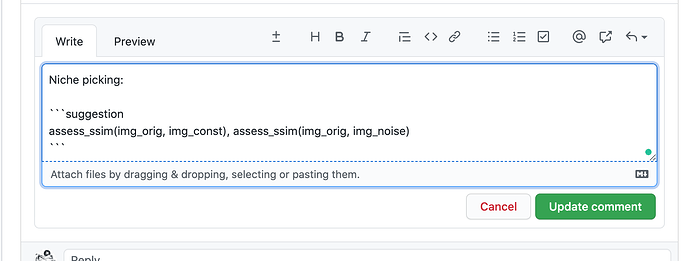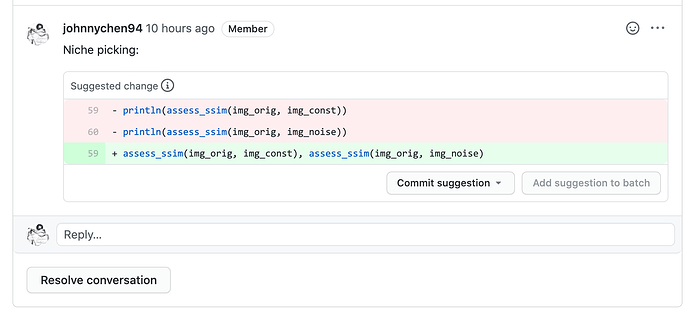我之前询问过如何搭建有传递层的神经网络,很感谢社区小天使JohnnyChen的回答
又来问还挺不好意思的……
我尝试重新写一个update!函数但是的确不会……啊,大概基础比较差感觉编程好难……
又想要batch,用adam来优化,感觉好混乱有些交叉的地方,我也不知道怎么解决后来又都删了。我把我的程序共享出来吧
数据的话也不太重要就不放了,,可以随机产生的(下面这段话可以不看……)
我真的努力写了…但是写的都运行不出来就删了只剩下能运行的了…就是大家可以给我甩一些链接让我好好看看或者举个小例子这样吗呜呜,把代码分享给大家,如果谁想要写类似的程序也可以稍微参考一下下……
不要凶我哦……我后续还会努力写的,写出来的话也会贴出来分享给大家虽然写的也不好……基本都是东拼西凑modelzoo,写代码真的需要积累知识我会继续努力的……
对不起我废话好多……
using Flux, Statistics, DelimitedFiles
using Flux: Params, gradient
using Flux.Optimise: update!
using Flux.Data: DataLoader
using Flux: throttle, @epochs
using Base.Iterators: repeated
using Parameters: @with_kw
using Juno
import Zygote: Params, gradient
using BSON
using BSON: @save, @load
# Struct to define hyperparameters
@with_kw mutable struct Args
η::Float64 = 3e-4 # learning rate
β::Tuple = (0.9, 0.8) # Exponential decay for the first (β1) and the second (β2) momentum estimate.
λ = 0.01f0 # regularization paramater
batchsize::Int = 100 # batch size 一次参数更新运算所需的样本数量,深度学习每一次参数更新并不是一个样本学习运算得来的,而是通过对一组数据进行运算后更新一次参数;1个iteration等于使用batchsize个样本训练一次;iteration为12,4,4
epochs::Int = 5 # number of epochs 一个epoch表示所有训练样本运算学习一遍。# 比如训练集有500个样本,batchsize = 10 ,那么训练完整个样本集:iteration=50,epoch=1.
savepath::String = "D:\\---MYFILE---\\--Nerual N--"
end
# fuction to process data
function get_processed_data()
# Loading Dataset
pwd()
cd("D:\\---MYFILE---\\--Nerual N--")
rawdata = readdlm("rawdatapqv.txt")' # read data
# split_ratio = args.split_ratio # For the train test split
train_p = 0.6 # 0.6
dev_p = 0.8 # 0.2
test_p = 1.0 # 0.2
n = 12
x = rawdata[1:6n, :] # input with n nodes power injection three phases
y = rawdata[6n+1:9n, :] # output with n node-voltage three phases
# Split into train, dev and test sets
train_index = floor(Int, size(x, 2) * train_p)
dev_index = floor(Int, size(x, 2) * dev_p)
test_index = floor(Int, size(x, 2) * test_p)
# Split input and output
x_train = x[:, 1:train_index]
y_train = y[:, 1:train_index]
x_dev = x[:, 1+train_index:dev_index]
y_dev = y[:, 1+train_index:dev_index]
x_test = x[:, dev_index+1:test_index]
y_test = y[:, dev_index+1:test_index]
# # stack of data
# train_data = (x_train, y_train)
# dev_data = (x_dev, y_dev)
# test_data = (x_test, y_test)
#
# # Batching
# # If shuffle=true, shuffles the observations each time iterations are re-started. If partial=false, drops the last mini-batch if it is smaller than the batchsize.
train_data = DataLoader(x_train, y_train, batchsize = 50)
dev_data = DataLoader(x_dev, y_dev, batchsize = 50)
test_data = DataLoader(x_test, y_test, batchsize = 50)
return train_data, dev_data, test_data
end
# Struct to define model
struct PassThroughBlock
forward
passthrough
end
Flux.@functor PassThroughBlock # 告诉Flux这是一个Flux兼容的网络层
# 先定义一个方便的构造函数
function PassThroughBlock(;activation = relu)
Ns = (72, 52, 32, 21, 30, 36)
Ls = [Dense(Ns[1], Ns[2], activation)]
Ps = []
for (n_in, n_out) in zip(Ns[2:end-1], Ns[3:end])
push!(Ls, Dense(n_in, n_out, activation))
push!(Ps, Dense(Ns[1], n_out, activation))
end
return PassThroughBlock(Chain(Ls)..., Chain(Ps)...)
end
# 接下来定义怎么样进行前向传播
function (block::PassThroughBlock)(x)
Ls = block.forward
Ps = block.passthrough
z = Ls[1](x)
for (l, p) in zip(Ls[2:end], Ps)
z = l(z) + p(x)
end
return z
end
# 测试集的平均误差
function loss_average(dataloader, model)
l = 0f0
for (x,y) in dataloader
l += Flux.mse(m(x), y)
end
l/(length(train_data)*50)
end
# test loss_all function
# bb=PassThroughBlock()
# loss_all(train_data,bb)
# 训练 ICNN
function train(; kws...)
# Initializing Model parameters
args = Args(; kws...)
# Load Data
# (x_train,y_train),(x_dev, y_dev),(x_test,y_test) = get_processed_data()
train_data, dev_data, test_data = get_processed_data()
# Construct model
m = PassThroughBlock()
# # regularization
# l1(x) = sum(x .^ 2)
# l2(x) = sum(abs.(x))
# loss J & l1
meansquarederror(ŷ, y) = sum((ŷ .- y).^2)/size(y, 2)
loss(x, y) = meansquarederror(m(x), y)
## Training
# callback cb
evalcb = () -> @show(loss_average(train_data,m))
opt = ADAM(0.0001,(0.9,0.8))
@epochs args.epochs Flux.train!(
loss,
params(m),
train_data,
opt,
cb = throttle(evalcb, 5),
)
BSON.@save joinpath(args.savepath, "ICNN.bson") params = cpu.(params(m))
@show loss_average(dev_data, m)
end
train()
# Testing the model, from saved model
function test(; kws...)
args = Args(; kws...)
# Loading the test data
_data, _data, test_data = get_processed_data()
# Re-constructing the model with random initial weights
m = PassThroughBlock()
# Loading the saved parameters
BSON.@load joinpath(args.savepath, "ICNN.bson") params
# Loading parameters onto the model
Flux.loadparams!(m, params)
@show loss_average(test_data, m)
end
test()


